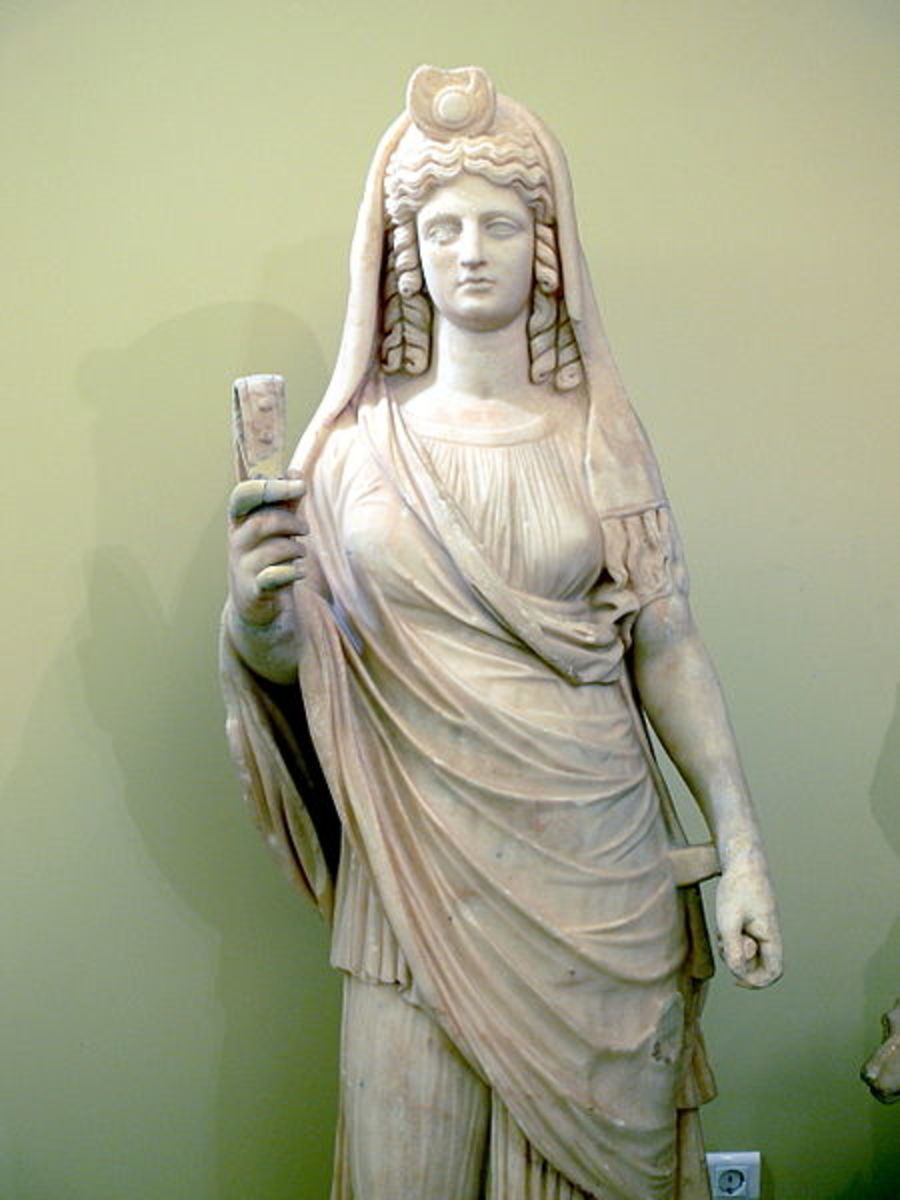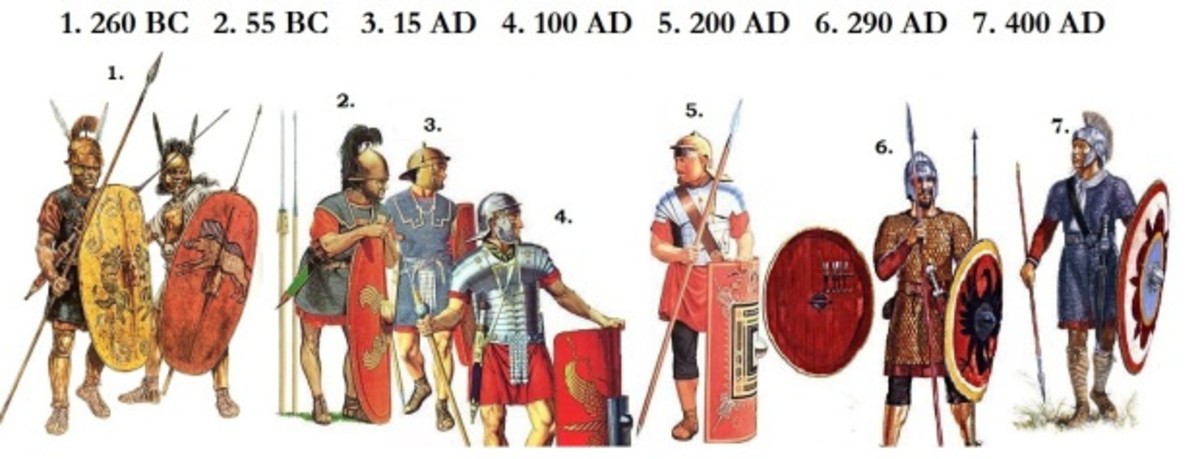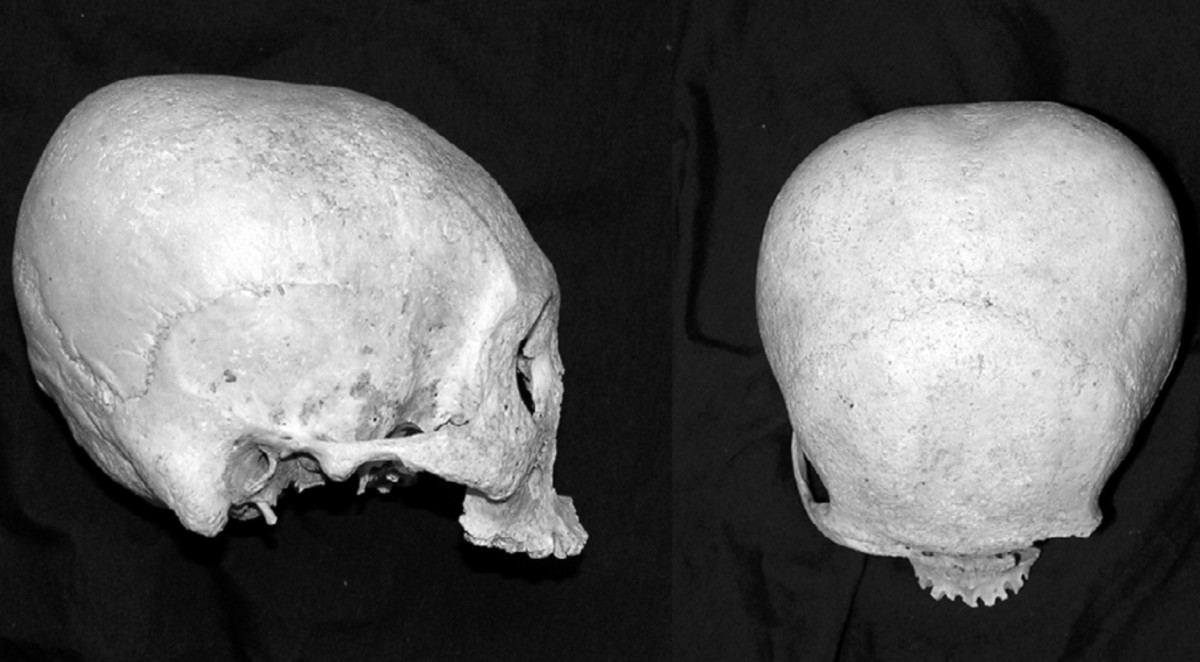Hades - The Greek god of the underworld
Hades and the underworld
Hades was the king of the underworld. He was the elder brother of Zeus the king of the gods. Hades was the oldest son of the titan gods Kronos and Rhea. Kronos was the king of the gods and the god of time. He heard a prophecy that foretold one of his children growing up to overthrow him as the king of the gods. Kronos made sure this would not happen and each time Rhea gave birth to one of his children he would eat the child. This was a metaphor for time consuming everything.
Hades along with his brothers and sisters were each swallowed up by Kronos. Hades, Hera, Poseidon, Hestia and Demeter were all consumed by their father. Zeus was the youngest of Kronos' children and when he was born Rhea, who by now was unhappy with her husband's behaviour hid him from his father and instead offered Kronos a stone wrapped up in swaddling. Kronos was deceived by this and ate the stone. Zeus grew up and when he had reached manhood he challenged his father. With the help of the goddess Metis (wisdom) he made Kronos disgorge all of the children he had eaten using a poison that the goddess had given him. When Hades and his siblings were freed, they along with Zeus fought their father until finally they defeated Kronos and threw him out of the heavens. At this point Hades was not the king of the underworld, Poseidon was not yet king of the sea, nor was Zeus the king of the gods. The poet Homer says that Zeus, Poseidon and Hades decided to draw lots to find out who should have authority over the sky, sea and underworld. Hades drew the lot that gave him kingship of the underworld.
The underworld was a place with different rivers and areas. There were five rivers, Kokyos (lamentation), Phlegethon (fire), Acheron (woe), Lethe (oblivion) and Styx (hate). The main regions of the underworld were the fields of Asphodel, the isles of the blessed, Tartaros and the pools of Lethe and Mnemosyne (memory). In later Greek religion the initiates of mystery cults such as the Elysium mysteries and Orphic cults taught that they could drink from the pool of memory in the underworld and thus retain their sense of self in the afterlife. During the times of Homer (c.800-700BC) such beliefs were not prominent, with a pessimistic view of witless shades the outcome for most mortals. These shades were called the Psyke which means the memory of the former living person. We still use the word Psyke, or Psyche to describe studies of the mind. Hermes would usher the psyche of the dead person into the underworld where it would lose all memory of the person it once was. Odysseus met the shades of the dead in Homer’s Odyssey (book 11). He visits the fields of Asphodel and performs a ritual sacrifice of a black goat or sheep. The blood from this sacrifice is mixed with barley and poured into a circular ditch. The shades approach and when they drink the blood retrieve their memories and are able to converse with Odysseus. Odysseus is able to meet the shades of his mother and many other female and male heroes and heroines who speak intellegently of their lives on earth.
Tartaros was the deepest section of the underworld and a place of punishment for impious mortals, titans and giants. Odysseus sees Tantalus, Sisyphus and Tityus in this place of punishment. Tantalus served his son Pelops to the gods cooked in a pie. All the gods realised what he had done, except for Demeter who was still mourning the loss of her daughter Persephone after she had been abducted by Hades. Demeter ate Pelops' shoulder before realising what she had done. Tantalus was forced to stand in a pool of water that came to his waist. He was constantly thirsty, however every time he tried to drink, the water would disappear below his feet. There were fruit that dangled above him from a tree branch. Everytime he tried to pick the fruit the branch would move the fruit out of reach. Sisyphus played tricks on the gods and even imprisoned Thanatus, the god of death so that he could escape up into the world. Finally, the gods asked Ares the god of war to send him back to the underworld. He was sent to Tartarus where he had to constantly push a stone up a mountain. If he managed to push it over the top of the mountain he would be freed of his punishment. Each time he nearly pushed the stone over the top, it would roll back to the bottom, thus making the task never ending. Tityus had tried to rape Leto, the mother of Artemis and Apollo. He was flung into Tartarus and bound to the ground. Vultures constantly pecked at his liver.
The isles of the blessed (Elysium fields) is a later optimistic view of the underworld where the sun shone and the heroes lived in a sort of semi immortality. The pool of memory is where the judges of the underworld resided. They were Rhadamanthos, Minos and Aeakos.
The most famous story involving Hades was his theft of Persephone. Persephone was the daughter of the goddess Demeter. She was out in a meadow with her friends when Hades appeared from the ground and snatched her away. Demeter searched for her daughter for many months and threatened to stop the spring months from coming to earth. Zeus intervened and told Hades to release Persephone. Hades knew that he could keep her if he tricked her into eating something so he gave her a pomegranate seed to eat. Finally a compromise was reached with Demeter and Hades. Persephone would live with Demeter during the spring, summer and first months of autumn. She would then live with Hades in the underworld during the latter months of autumn and winter. This story was a way of explaining why there were fruitful times of the year and times when little would grow.
Another famous story involving Hades was when Pirithous and Theseus descended into the underworld. Theseus decided to abduct Helen of Sparta when she was still a girl and keep her until she was old enough to marry. Pirithous decided to travel into the underworld and abduct Persephone. The two heroes descended in the kingdom of Hades and attempted to take Persephone. Hades knew of their plan before they arrived and would soon imprison the heroes. He tricked them by pretending to host a great feast. The heroes were enjoying the entertainment when the food started to turn to snakes which coiled around them and acted like chains. Herakles would later rescue Theseus, however Pirithous would remain a prisoner in the underworld.
Hades is rarely depicted in art such as temple sculpture and vase painting, however it is safe to assume that his appearance would be similar to Zeus. He did not have temples dedicated to him like the other gods, however he was remembered in prayer. Although Hades is a very important god he has not ranked as one of the 12 Olympian gods because he did not reside on mount Olympus. Special honours known as the secular games were held every hundred years in honour of Hades.
To discover more about Hades and the other Olympian gods visit http://www.mythologyhellenic.com







